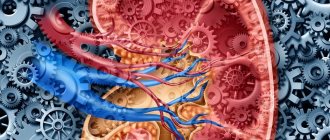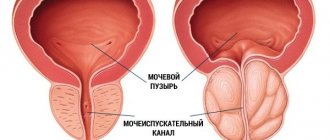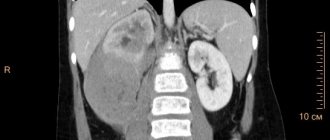Under the term hypoglycemic coma means an acute condition associated with inhibition, in a certain sequence, of the central nervous system, due to a sharp drop in the concentration of carbohydrates (sugars) in the blood associated with their decrease.
1. Clinical picture and symptoms
2. Reasons for the development of hypoglycemic coma
3. Therapy methods
4. Possible complications
5. First aid
The sequence of inhibition of the central nervous system goes from the highest nervous structures - the cerebral cortex to the gradual inhibition of subcortical structures and centers of the medulla oblongata. Hypoglycemic coma develops acutely and requires emergency medical care, which, if not provided, significantly increases the risk of death due to inhibition of the respiratory and cardiovascular activity of the body.
Types of diabetic coma
Increased attention to the prevention of the development of diabetic comas is due to the high level of complications of these life-threatening conditions. The mortality rate for diabetic ketoacidosis (DKA) in European countries is 2-7%, in the Russian Federation 7-19% [1].
The incidence of DKA in people living with type 1 diabetes mellitus (DM) is 10-100 cases per 1000 cases. About a third of them end up in hospitals in a state of diabetic coma [2]. At the same time, competent glucose-lowering therapy can significantly reduce the likelihood of developing comatose states and delay the development of other serious complications of diabetes [1].
There are 4 types of comas that develop in diabetes:
- Diabetic ketoacidotic. In the medical literature it is also referred to as hyperglycemic hyperketonemic.
- Diabetic non-ketoacidotic hyperosmolar. It is also hyperosmolar non-acidotic.
- Lactic acidosis (lactic acidosis).
- Hypoglycemic coma [2, 3, 7].
Ketoacidotic
Hyperglycemic hyperketonemic coma is an acute decompensation of diabetes, which develops as a result of severe insulin deficiency. At the same time, there is a lot of glucose in the blood, but in the absence of insulin it does not enter the cells, so fat begins to be used as an energy source instead of carbohydrates.
Active breakdown and inclusion of free fatty acids in metabolism leads to the formation of ketone bodies. Their synthesis increases to 1000 mmol per day, which significantly exceeds the ability of the kidneys to excrete ketones in the urine [7].
Changes in blood and urine tests in diabetic ketoacidosis in adults are presented in table [1].
| Laboratory indicators | Values |
| Blood plasma glucose | >13 mmol/l to 18-20 mmol/l [3] |
| Plasma ketone bodies | >5 mmol/l |
| Ketonuria | ≥++ |
| pH | ˂7,3 |
Coma in diabetes mellitus - types, signs, treatment measures, prevention
Diabetes mellitus is one of the most widespread diseases of the endocrine system, characterized by an absolute or relative lack of insulin in the blood.
Despite many years of experience in studying the causes and methods of treating this pathology, diabetes mellitus remains among the diseases whose complications pose a threat to the patient’s life. Despite the indisputable fact that the body of a person with diabetes adapts to small fluctuations in blood glucose levels over time, a rapid decrease or increase in this indicator often contributes to the development of conditions that require emergency intensive care. These are the so-called acute complications of diabetes mellitus - comatose states, which, depending on the mechanism of development and clinical signs, are divided into several types:
- ketoacidotic coma;
- lactic acidemic coma;
- hyperosmolar coma
- hypoglycemic coma;
Causes
The likelihood of developing a coma due to progressive ketoacidosis increases in the following cases:
- Errors in insulin therapy.
- Increased need for insulin in pregnant women, during surgical operations, the prescription of certain drugs (glucocorticosteroids, diuretics, etc.), physical activity, and stressful situations.
- Excessive intake of easily digestible carbohydrates and fats from food in case of severe dietary violations [4, 7].
Symptoms
A person with ketoacidosis' condition worsens gradually, usually over 1-2 days or more. The clinical picture is divided into 3 successive stages:
- Moderate ketoacidosis. There is weakness, lack of appetite, thirst, dry skin and mucous membranes, and frequent urination. The smell of acetone appears in the exhaled air.
- Hyperketonemic precoma. Muscle weakness, thirst, dry mouth increases. Abdominal pain, heart pain occur, and decreased vision is noted. The patient is inhibited.
- Ketoacidotic coma. The man loses consciousness. A characteristic rare deep noisy breathing appears with a noticeable odor of acetone in the exhaled air [7].
Forecast
The prognosis for a comatose state depends on the cause, as well as the degree of depression of consciousness and the duration of its depression. In case of precoma or the presence of stage I coma, a favorable prognosis is noted. In the case of coma II and III degrees, the prognosis is questionable, but there is hope for recovery. If we consider a IV degree coma, it most often ends in death. A deep coma lasting more than 24 hours has a poor outcome. If reflexes are absent for less than 6 hours, the prognosis is relatively favorable.
Favorable prognostic factors are:
- Early return of speech.
- Spontaneous eye movements.
- Preserved muscle tone at rest.
- Ability to execute commands.
The prognosis is unfavorable if patients, after circulatory arrest, experience:
- Myoclonic status epilepticus .
- Lack of pupil reaction for 24-72 hours.
- Absence of corneal reflexes.
- No response to pain within 72 hours.
In uremic coma, all reflexes and motor reactions may be lost, but recovery after treatment is complete. If hypothyroid coma , death occurs in 60-90%.
If a patient develops a hepatic coma against the background of chronic liver pathology, then every fifth person does not come out of it and death occurs after 1-3 days. How long do people live in a hepatic coma after they come out of it? This period depends on many factors, but most often the life span does not exceed several months, provided that the patient is constantly supported by liver function. Life extension is possible through organ transplantation - patients live from 5 to 10 years. Coma with fulminant hepatitis ends in death in 85% of patients. Patients with liver failure live for 3 months.
Hyperosmolar non-acidotic
Non-ketoacidotic hyperosmolar coma also develops due to acute decompensation of diabetes. It is based on a sharp decrease in insulin levels and loss of fluid from the body. In this case, there is no excessive formation of ketone bodies and acidosis [7].
| Laboratory indicators | Values |
| Blood plasma glucose | >30 mmol/l |
| Blood osmolarity | 400-500 mOsm/l [4] |
In a general blood test, an increase in hemoglobin and hematocrit levels is noted due to a decrease in plasma volume. There is no acetone in the urine [3].
Treatment of hypoglycemia
First of all, when signs of this condition appear, it is necessary to provide the body with glucose.
Conscious patients should be given quickly digestible carbohydrates: sweet drinks (fruit juice, compote, tea, sweetened water) and sweets (sweets, marmalade, honey, pure sugar). In cases of moderate severity, a glucose/dextrose solution is administered intravenously and/or subcutaneously, glucagon is administered subcutaneously or intramuscularly.
For hypoglycemic coma, droppers with saline, insulin and electrolytes are used.
First of all, medical care for hypoglycemia is aimed at treating the underlying disease that caused the pathology.
Causes
Most often, hyperosmolar non-acidotic coma develops in elderly people living with type 2 diabetes [3]. Provoking factors include any diseases and conditions in which the body actively loses fluid:
- irrational use of diuretics;
- diseases accompanied by recurring diarrhea and vomiting;
- staying in conditions that cause active sweating (working in a hot shop, moving to a country with a hot climate, etc.).
Also, this type of diabetic coma can develop with myocardial infarction, massive bleeding, and in patients on hemo- or peritoneal dialysis [7].
Classification
Comatose states can be divided into two groups: primary (or cerebral) and secondary (so-called metabolic). In this regard, the following types of comatose states are distinguished:
- Associated with damage to the central nervous system ( stroke , traumatic brain injury , brain tumors , epilepsy ).
- Occurring when gas exchange is disrupted (hypoxic, respiratory).
- Associated with impaired hormone production (hypothyroid, diabetic, thyrotoxic, hypocorticoid, hypoglycemic, hypopituitary).
- Toxigenic (associated with the action of endogenous and exogenous toxins - hepatic, pancreatic, uremic, alcoholic).
Associated with loss of electrolytes and water (hyponatremic, chlorhydropenic with vomiting, alimentary-dystrophic).
If we separately consider comas with diseases of internal organs, we can distinguish:
- Pancreatic.
- Uremic.
- Hepatic.
- Coma in diabetes mellitus .
The stages of coma are divided into:
- Mild degree. Manifested by lethargy, lethargy, confusion .
- Moderate severity. The patient is in a stupor: does not respond to light, sounds, pain. The pressure drops, the heart rate accelerates. Chaotic movements in the legs and arms are periodically observed, and spontaneous bowel movements are observed.
- Deep coma. Shallow breathing, no swallowing, pupils dilated, blood pressure reduced.
- Terminal stage. Reflexes are completely absent, the pupils do not react, the pressure is critically reduced. The patient is connected to a ventilator and receives parenteral nutrition.
Any coma is a lack of consciousness and a state of wakefulness. The patient lies with his eyes closed, he is not aware of his surroundings, and any stimulation does not cause activity. This is due to the fact that there is diffuse damage to the cortex and white matter of both hemispheres of the brain. Damage to one hemisphere does not lead to coma.
To differentiate coma from fainting, it is generally accepted that the coma lasts more than an hour. In rare cases, it lasts more than a month.
The most common are comas due to diabetes , which are its complications and require immediate treatment. The most common is diabetic coma (synonymous with ketoacidotic), which develops with insulin deficiency, decreased glucose utilization and an increase in its level in the blood (28-30 mmol/l). Develops in patients with severe diabetes mellitus. Provoking factors are:
- improper administration of insulin ;
- increased need for insulin;
- infections, injuries, operations;
- myocardial infarction;
- cerebrovascular accidents;
- stress;
- taking drugs.
Hypoglycemic coma occurs when sugar levels drop to 2 mmol/l. In diabetic patients, this type of coma is caused by a large dose of insulin and lack of food intake, severe physical activity or alcohol intake. Hypoglycemia can also be caused by sulfonylurea drugs ( Glimeperide , Amaryl , Glyme ), but this is less common than with an overdose of insulin. Some diabetic patients experience a syndrome of atypical hypoglycemia—coma develops without prior activation of the sympathoadrenal system. Hypoglycemic conditions are also observed in people who do not have diabetes.
In endocrinology, hypothyroid coma - a severe complication of hypothyroidism , which has not been treated for a long time, so decompensation of the condition has developed. It primarily develops in older people who have not received treatment. Provoking factors for this condition are operations, injuries, serious illnesses, hypothermia, and taking sedatives. Patients in a state of hypothyroid coma die from cardiac and respiratory failure in 40% of cases, even with timely resuscitation measures.
Uremic coma is associated with progressive renal failure, which causes intoxication with nitrogenous wastes and disturbances in water and electrolyte balance. This condition can develop with glomerulonephritis , diabetic nephrosclerosis , a mechanical obstruction to the outflow of urine, or exposure to nephrotic poisons. In addition to kidney diseases, this type of coma develops with shock, massive blood loss, dehydration, which results in renal failure and uremia . There is a gradual increase in symptoms. In precoma weakness , headache drowsiness , slowness of movements, nausea, itching of the skin , and the smell of ammonia in the exhaled air appear
The stuporous state gradually increases and during coma there is no consciousness, swelling , puffiness of the face , vomiting , diarrhea , and no urine appear. Blood pressure is elevated, tachycardia and arrhythmia , shallow breathing.
Another comatose state is hypoxic coma . This is a depression of the central nervous system, which is associated with a deterioration in cellular respiration due to insufficient oxygen supply to the cell. This type of coma develops faster than other types and requires urgent restoration of respiratory function. It has several options:
- Hypoxemic - insufficient supply of oxygen from the outside.
- Asthmatic - considered as a complication of bronchial asthma .
- Anemic - occurs with decompensated anemia.
- Respiratory - develops with respiratory failure.
Epileptic coma occurs after status epilepticus, when frequent seizures occur over a short period of time. The patient is unconscious, the face is pale and cyanotic, the pupils are dilated and do not react well to light. Breathing is wheezing and frequent, blood pressure is low, pulse is weak. Involuntary urination and loss of feces. As the coma deepens, breathing becomes intermittent, the pulse becomes thready, and the bluishness of the skin increases. A characteristic symptom that allows you to distinguish coma from other types is biting the tongue and the presence of bloody foam from the mouth.
Symptoms
The patient's health deteriorates slowly over 1-2 weeks. At the precoma stage, severe thirst, dry mouth, dryness and decreased skin turgor, and frequent excessive urination are noted.
In a coma, as a result of fluid loss, the patient's facial features become sharpened, the eyeballs sink and become soft to the touch. There is no smell of acetone in the exhaled air. Various neurological disorders are characteristic: pathological reflexes, nystagmus, paralysis, epileptiform convulsions. The result of blood thickening can be thrombosis of arteries and veins [3, 7].
First aid
Correction of the patient's condition is carried out in a medical institution. People with moderate ketoacidosis are hospitalized in the therapeutic/endocrinology department, and in a state of precoma and coma - in the intensive care unit [4].
At home you can:
- conduct a rapid glycemic analysis if you have a glucometer;
- call an ambulance.
A person with ketoacidosis can be given 20 units intramuscularly. short-acting insulin (RAI) [4]. With moderate hypoglycemia, the patient needs to take easily digestible carbohydrates (sugar dissolved in tea, water, a piece of bread) [3].
In the emergency department, a urine test for ketone bodies is additionally performed and infusion therapy begins with the introduction of a 0.9% NaCl solution at a rate of 1 l/h [4].
List of sources
- Efimov A. S., Komissarenko I. V., Skrobonskaya N.A. Emergency endocrinology. – M.: Medicine, 1982, – 208 p.
- Balabolkin M.I., Lukyanchikov V.S. Clinic and therapy of critical conditions in endocrinology. – Kyiv: Health, 1982, – 152 p.
- Kurek, V.V. Guide to emergency conditions in children / V.V. Kurek, A.E. Kulagin. 2nd ed. Moscow: Med. lit., 2012, - 464 p.
- Sumin, S. A. Anesthesiology, resuscitation, intensive care: textbook. for students of institutions of higher professional education / S. A. Sumin, I. I. Dolgina. Moscow: Medical Information Agency, 2015, 496 p.
- Krylov, V.V. Neuroreanimatology. Practical guide / V. V. Krylov, S. S. Petrikov. Moscow: GEOTAR-Media, 2010, - 176 p.
Consequences
Diabetic coma has a number of adverse consequences for human health, as it contributes to the rapid progression of diabetes, disrupts or aggravates existing disorders in the functioning of internal organs. For example, older people who have suffered a hypoglycemic coma develop:
- cerebral edema (in 26% of cases);
- acute cardiovascular failure (22%);
- atrial fibrillation (13%) [6].
Fear of hypoglycemia can cause inadequate blood sugar control [5].










